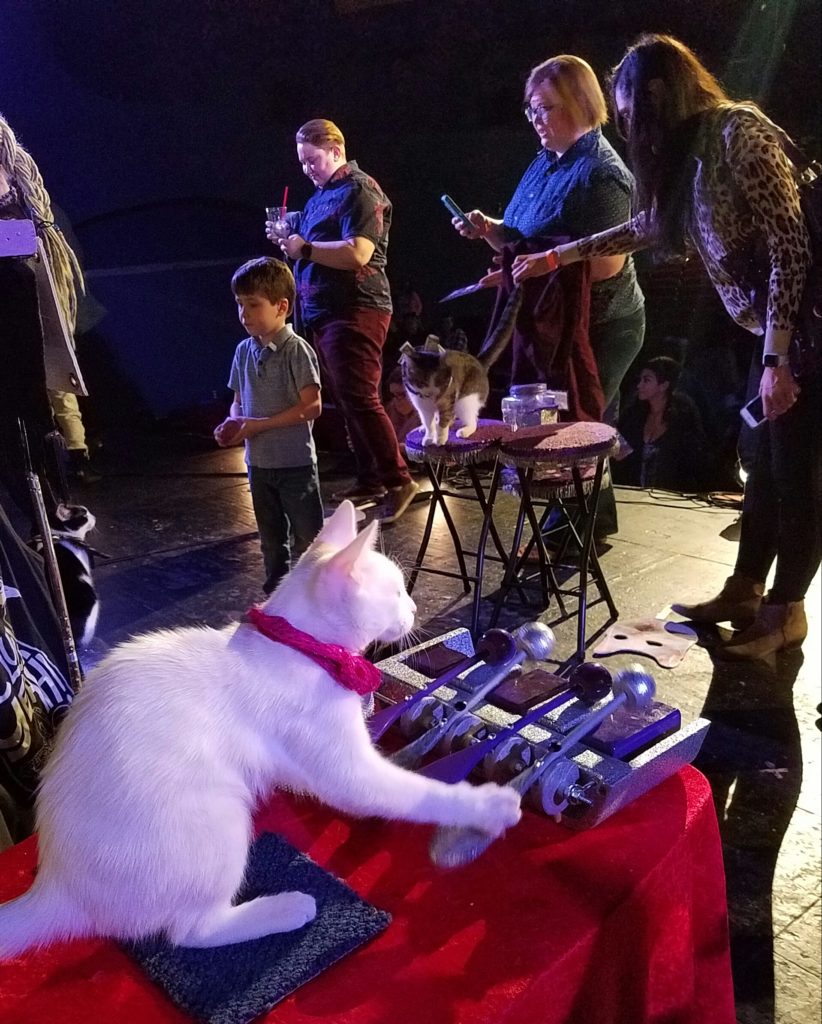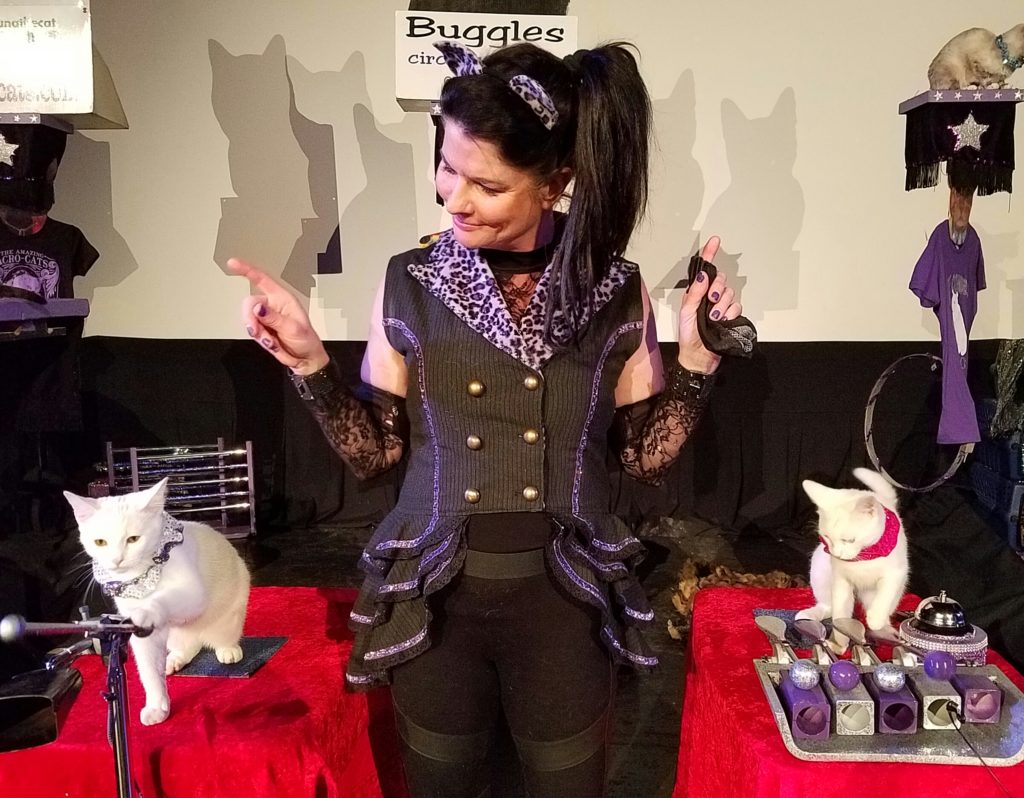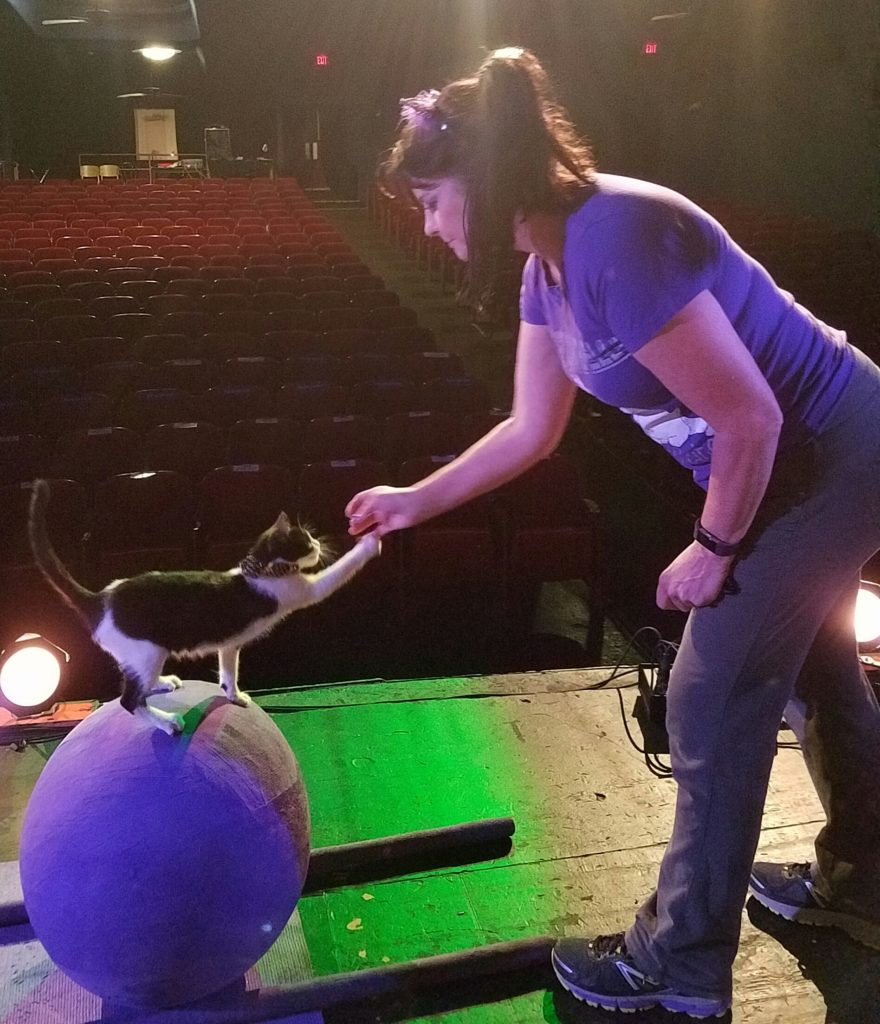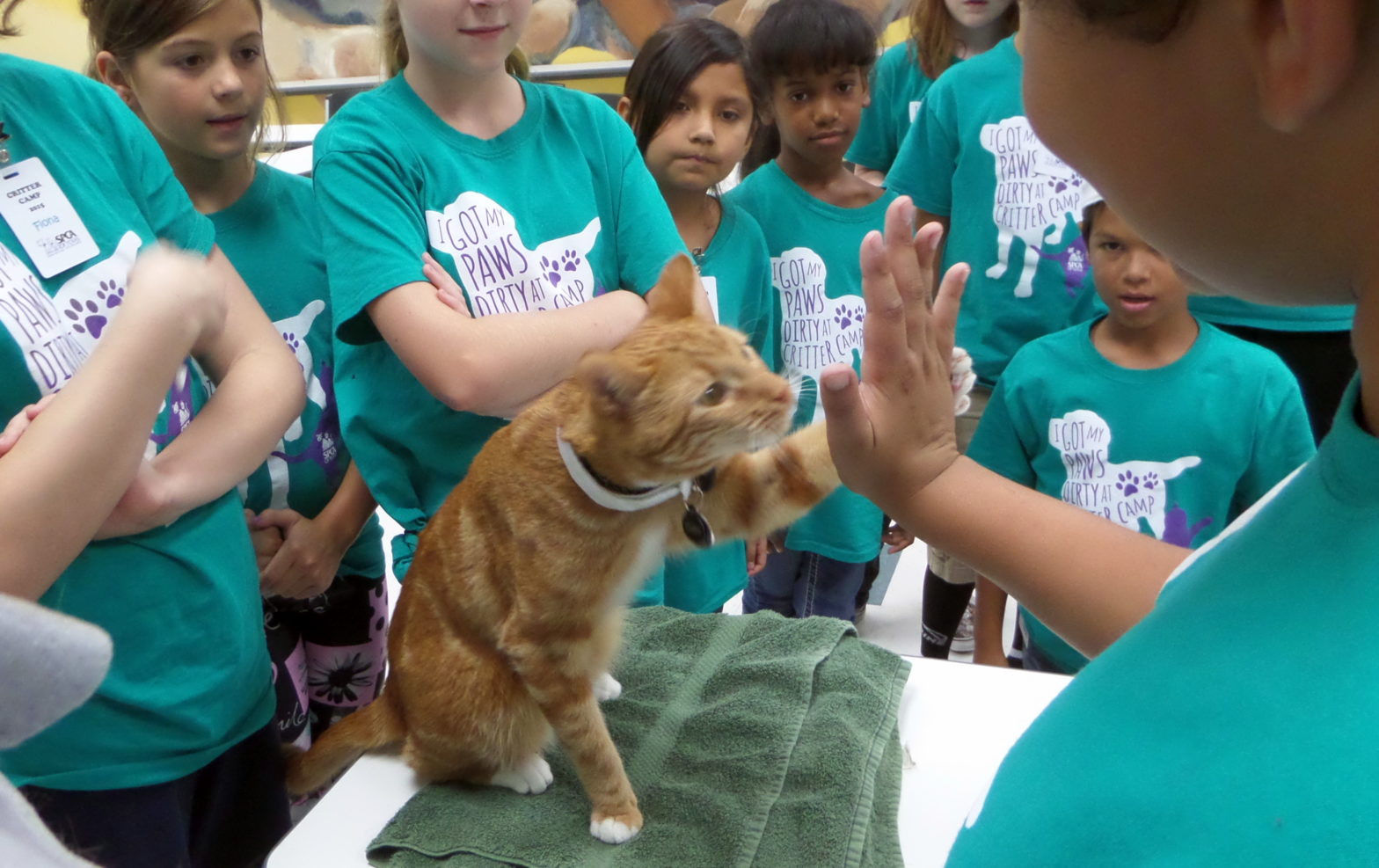Despite reputations for being aloof, many cats like to ham it up by performing tricks before an audience. I know firsthand as Casey, my orange tabby, feels right at home in the spotlight.
That spotlight can be before students in my pet first aid classes where he happily volunteers to be toweled, have his pulse checked and even have students wrap his faux broken leg or bloody paw. Or, it can be in front of a classroom of kid campers at an animal shelter where Casey patiently performs his “come,” “jump up,” “sit,” “touch paw,” and “spin” moves.
Casey is not unique. There are former strays and shelter rescues who now star before packed audiences all over the country as members of the Amazing Acrocats under the guidance of renowned animal trainer Samantha Martin.
During a recent behind-the-scenes opportunity with Martin and her team of talented tabbies, she confessed:
“I was inspired to put this show together about 11 years ago when I noticed there weren’t many trained cat acts out there and then I discovered why,” she says. “Nothing teaches you humility like a trained cat act in front of a live audience.”

The most trainable cats tend to:
- Demonstrate great attention spans
- Display outgoing personalities
- Be highly motivated by treats, praise, or grooming sessions
Successful cat training is accomplished by employing a pattern of behavior reinforced by reward. You can tap this training method more easily than you realize. For example, does your cat race into the kitchen each time she hears you peel back the top of a can of cat food? This sound serves as a cue to your cat that if she ventures into the kitchen, there is a good possibility that she will be rewarded with food. So, start pairing up the food can opening with a cue, such as, “Come (your cat’s name)” and followed by, “Good (your cat’s name)” and then handing her the bowl of food.
Cats are whizzes at reading our body language, voice tones, and even our emotions. So make training sessions short, fun, and concise.

Why even try to train a cat? I’ll give you four big reasons:
- You build a stronger friendship bond and a deeper level of trust with your cat.
- You stimulate your cat’s mind and work his muscles.
- You increase his level of confidence.
- Cats who welcome the chance to learn new tricks and obedience cues are less apt to display behavioral problems that are often triggered by boredom or the inability to unleash energy appropriately.
To inspire you, here are some short videos featuring Martin using a lure to train Casey to spin as well as using target sticks and clickers to get new and seasoned members of her Amazing Acrocats to hone their trick skills:
Martin clicker trains Pet Safety Cat Casey to spin:
Rising star Ahi Tuna rings the bell and hits the applause button.
Motivated to perform, 7-month-old Albacore Tuna masters leaping over hurdles and jumping through a hoop.
Alley the Athlete holds the world record for the longest horizontal cat leap (6 feet). She practices her distance leaping before a recent Amazing Acrocats show in Dallas:
Can every cat learn a trick – or even want to learn a trick? Probably not, but more cats are eager to learn than most realize.
Says Martin: “I put this show together is to inspire people to train their cats. You can train your cat to do everything you see our cats do using clicker training. Or not do, depending on their moods because they are cats. Click training involves positive reinforcement. So if they do something we like, we click and give them a treat and ignore the bad stuff. It is a great way to bond with your cat. It gives them mental stimulation and physical activity.”
To learn more and find out when the Amazing Acrocats will be performing near you, visit www.circuscats.com or following them on Facebook at The Acrocats.

This article was reviewed/edited by board-certified veterinary behaviorist Dr. Kenneth Martin and/or veterinary technician specialist in behavior Debbie Martin, LVT








